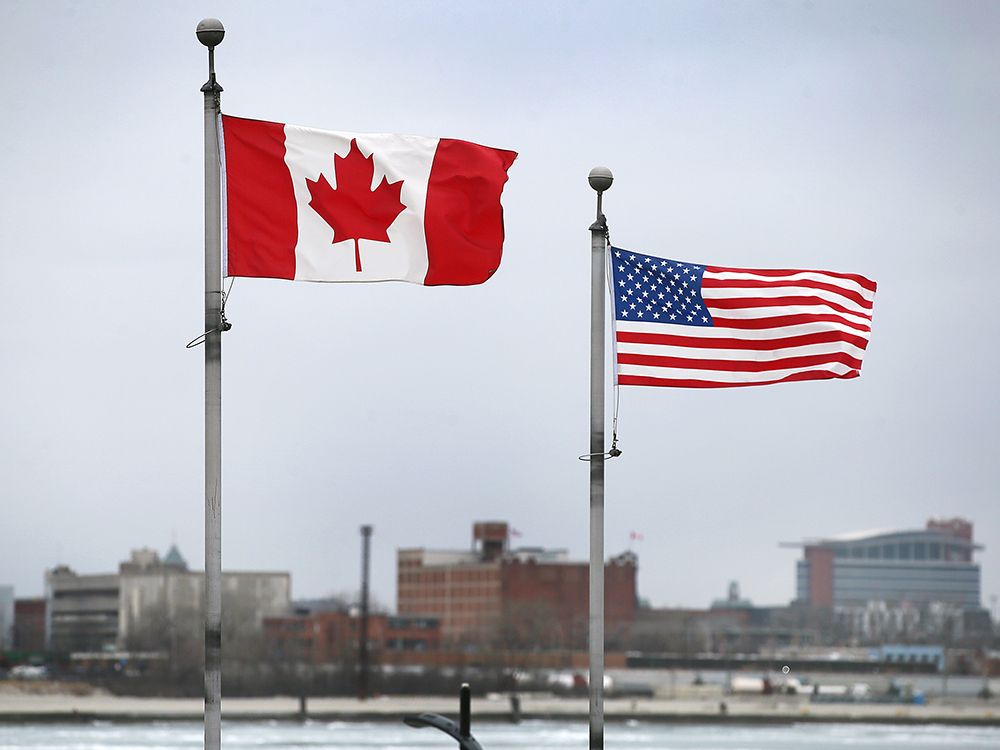
When U.S. President Donald Trump threatened to increase tariffs on Canada in a letter last week, he complained that the federal government had “financially retaliated against the United States.”
In the letter, posted to Truth Social on Thursday, Trump said the U.S. tariff on Canadian goods would jump from 25 per cent to 35 per cent on Aug. 1 and he warned Prime Minister Mark Carney not to consider raising Canada’s counter tariffs on the U.S.
In response to Trump’s tariffs, Canada has announced tariffs on $96 billion worth of U.S. merchandise, according to an Oxford Economics analysis. However, Carney has also since exempted a number of products from these tariffs. The Oxford Economics analysis also found that at least $56 billion is eligible for exemption or remittance from tariffs.
Here’s what we know about the current state of Canada’s retaliatory tariffs against the United States.
What has Canada levied tariffs against?
Over the course of the spring, Canada announced several rounds of tariffs.
On March 4, a 25 per cent tariff on $30 billion worth of U.S. imports.
On March 13, a 25 per cent tariff on a further $29.8 billion worth of U.S. goods, including steel and aluminum.
As of April 9, a 25 per cent tariff on $35.6 billion worth of cars and parts that are not compliant with existing free-trade agreements.
At present, the government of Canada lists 37 pages of goods that are facing tariffs.
It includes items such as food, clothing and cosmetics.
On page 37, for example, scent sprays and other toilet sprays are listed as being subject to a 25 per cent tariff.
The same tariff is applied to everything from chicken and powdered milk on page 1, to prune wine on page 7 and négligés on page 16.
All in, Oxford Economics estimates between $32 billion and $40 billion in U.S. product remain tariffed by Canada after exemptions are accounted for.
What are the exemptions?
A number of exemptions have since been carved out.
Canada, like the U.S., has exempted goods that are compliant under the United States–Mexico–Canada Agreement, which has been in effect since July 1, 2020.
For example, this would include much of the auto sector. A 25-per-cent tariff remains on non-USMCA compliant automobiles and auto parts.
There are a further set of exemptions, too. The first is an exemption for some auto manufacturers that continue to produce vehicles in Canada and carry out planned corporate investments. This represents a $35.6-billion exemption, analysis suggests.
The second, writes Tony Stillo of Oxford Economics, is for “manufacturing, processing, and food and beverage packaging, and on those used for public health, health care, public safety, and national security.” This, likely worth a bit more than $20 billion, includes some steel and aluminium. This exemption will run for six months, from mid-April to mid-October 2025.
“A lot of those intermediate goods that go into manufacturing, food packaging and things of that nature, are eligible for relief,” said Stillo in an interview.
Are there any unclear categories?
Yes. “There’s still a degree of uncertainty about what qualifies for exemption,” said Stillo.
There are several exemption categories that are less clear. This includes the public health, health care, public safety and national security products, which Stillo estimates are worth around $3.2 billion.
Why are some things tariffed and others not?
While it’s tough to say exactly why some decisions were made by the federal government, Stillo has a hunch: There are some goods that are easily replaced. For example, Canadians can buy Canadian chicken instead of American chicken. Or chicken could be sourced from other countries. This is similarly true with all sorts of food and all sorts of cosmetics and clothing.
However, there are some goods and materials moving through North America’s heavily integrated supply chain that can’t easily be swapped out.
“What the government’s trying to do, and I think this is really a good plan, is we realize that it’s going to be tough for a lot of our manufacturers to source from non-U.S. sources, and they’re giving them time to find an alternative source,” said Stillo. “I think the Canadian government appreciates the damage that a trade war can inflict, and they strategically aim to target counter tariffs that would be more harmful to the U.S. and Canada.”
What does this all mean?
Well, it means fundamentally that some goods cost more in Canada now than they would without tariffs. And it means some are less expensive because they aren’t tariffed.
It also means that, fundamentally, the United States has an effective tariff rate of 14.1 per cent on Canadian goods, while Canada’s effective tariff rate is more like 2.8 per cent, if you account for all the tariff relief.
“We’re less than proportional, for sure,” said Stillo.
Our website is the place for the latest breaking news, exclusive scoops, longreads and provocative commentary. Please bookmark nationalpost.com and sign up for our newsletters here.